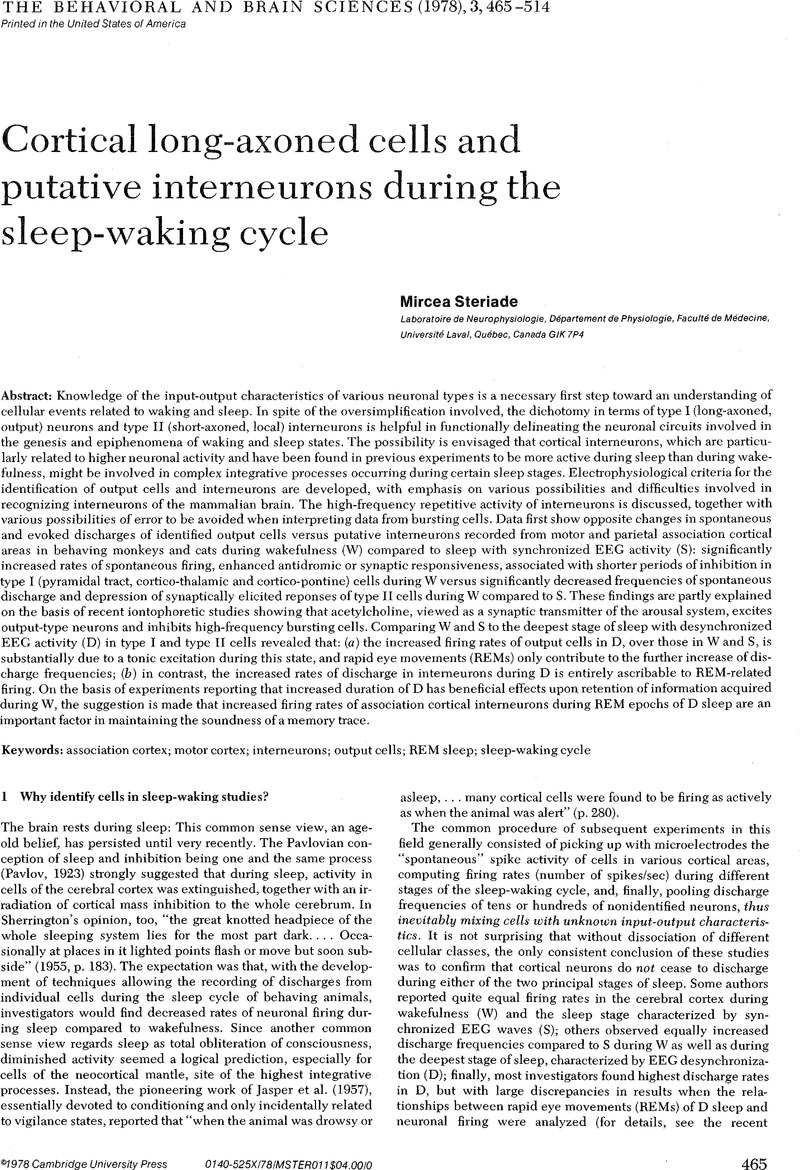No CrossRef data available.
Article contents
Why do cortical long-axoned cells and putative interneurons behave differently during the sleep-waking cycle?
Published online by Cambridge University Press: 04 February 2010
Abstract
An abstract is not available for this content so a preview has been provided. Please use the Get access link above for information on how to access this content.

Information
- Type
- Open Peer Commentary
- Information
- Copyright
- Copyright © Cambridge University Press 1978
References
REFERENCES
Fishbein, W. and Gutwein, B. M.Paradoxical sleep and memory storage processes. Behavioral Biology. 19:425–464, 1977.CrossRefGoogle ScholarPubMed
McCarley, R. W. and Hobson, J. A.Neuronal excitability modulation over the sleep cycle: A structural and mathematical model. Science, 189:58–60, 1975.CrossRefGoogle ScholarPubMed
Nakamura, Y., Goldberg, L. J., Chandler, S. H., and Chase, M. H.Intracellular analysis of trigeminal motoneuron activity during sleep in the cat. Science. 199:204–207, 1977.CrossRefGoogle Scholar

